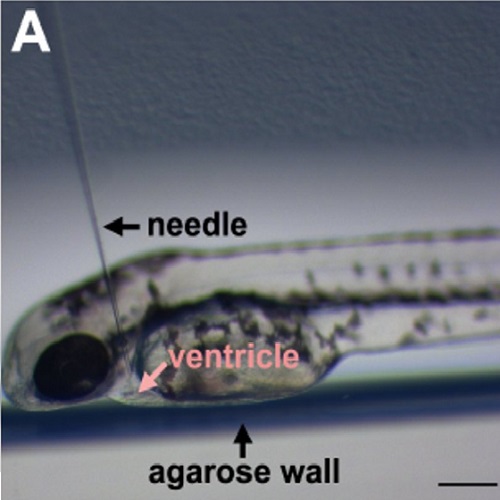Reverse genetic morpholino approach using cardiac ventricular injection to transfect multiple difficult-to-target tissues in the zebrafish larva.
The zebrafish is an important model to understand the cell and molecular biology of organ and appendage regeneration. However, molecular strategies to employ reverse genetics have not yet been adequately developed to assess gene function in regeneration or tissue homeostasis during larval stages after zebrafish embryogenesis, and several tissues within the zebrafish larva are difficult to target. Intraventricular injections of gene-specific morpholinos offer an alternative method for the current inability to genomically target zebrafish genes in a temporally controlled manner at these stages. This method allows for complete dispersion and subsequent incorporation of the morpholino into various tissues throughout the body, including structures that were formerly impossible to reach such as those in the larval caudal fin, a structure often used to noninvasively research tissue regeneration. Several genes activated during larval finfold regeneration are also present in regenerating adult vertebrate tissues, so the larva is a useful model to understand regeneration in adults. This morpholino dispersion method allows for the quick and easy identification of genes required for the regeneration of larval tissues as well as other physiological phenomena regulating tissue homeostasis after embryogenesis. Therefore, this delivery method provides a currently needed strategy for temporal control to the evaluation of gene function after embryogenesis.
Back to list
